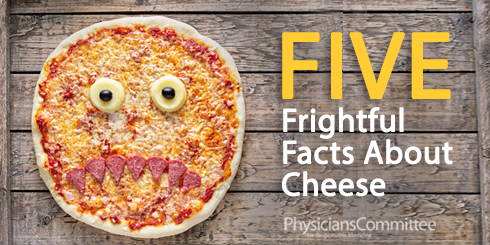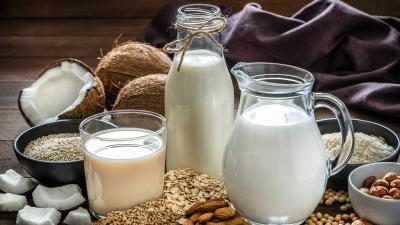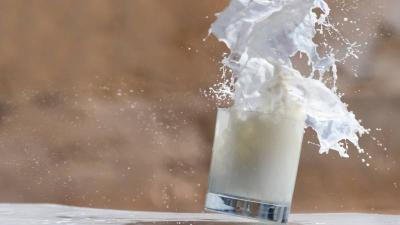Five Frightful Facts About Cheese

Learn five spooky stats about cheese!
Vampires and goblins outside your house? Pretty tame stuff compared to what’s inside. Slice open a pack of blue cheese. That yucky stinky feet aroma happens to come from brevibacteria—exactly the same bugs that cause—you guessed it—stinky feet. Or how about the faintly vomit-like smell of parmesan? It comes from butyric acid, the same compound that lends its odor to—yes, you guessed it again. And cheese also contains skatole, a compound that imparts some of the stinky scent of human waste—that’s waste as in number two.
Yuck, you say, and rightly so.
But I’m telling you this for a reason. Halloween and the autumn months that follow are when Americans gain weight faster than at any other time of year. Halloween candy is part of it. But most of our collective weight gain comes from cheese, meat, and other fatty foods.
From cheesy pizzas to gooey dishes of macaroni and cheese, cheese is one of the most pervasive foods in American culture. In fact, the United States now produces 11.8 billion pounds of cheese every year, and Americans’ cheese consumption—and cholesterol levels—are skyrocketing as a result.
Here are five scary stats about cheese:
1) Cheese gets its smell from the same bacteria found in unwashed feet and body odor. During the process of fermentation, cheesemakers add different types of bacteria to milk to produce distinct flavors and smells. To produce Munster, Limburger, and several other cheeses, cheesemakers add brevibacteria—the exact same bacterial species that lives on your feet, while other cheese cultures include Staphylococcus epidermidis—the bacteria responsible for human body odor. On top of that, the cheese-making process produces butyric acid—the same compound produced by your stomach acid during digestion, which gives human vomit its distinct smell.
2) Cheese is one of the most heavily processed foods you’ll find. Don’t let the advertisements fool you. Dairy products are often erroneously touted as “nature’s perfect food,” but there’s nothing natural about cheese. To make cheese, cow’s milk is pasteurized, fermented by bacteria, coagulated with enzymes, separated into solids, salted, and aged. Then it might be baked onto a pizza, stuffed into a casserole, or sprinkled over tacos, before being baked and salted again.
3) Dairy crack? After downing one slice of cheesy pizza, why is it so hard to stop there? Evolutionarily, it makes sense: We’re wired to seek out food sources that are high in fat and calories and that contain salt—a compound that was once hard to come by. On top of that, cheese contains mild opiate-like compounds called casomorphins, which attach to the same brain receptors as addictive drugs. Like other opiates, when casomorphins attach to these receptors, the brain releases dopamine, leading to a sense of reward and pleasure. This system works well to ensure that growing calves want to eat, but for humans, it’s a recipe for weight gain and health problems.
4) The government actively encourages your cheese addiction. In the Dietary Guidelines, the U.S. government notes that most people consume far too much saturated fat, cholesterol, and sodium and encourages Americans to cut back to improve their health. But when it comes to cheese—a top source of all three overconsumed nutrients—is the government practicing what it preaches? The U.S. government accepts about $140 million per year from the cheese industry, which it then pumps into Dairy Management Inc.—a corporation overseen by the USDA whose function is to boost milk sales. DMI spends millions of taxpayer dollars working with fast-food chains to develop cheesy, high-fat menu items and promote them to the American public. Wendy’s Cheddar-Lover’s Bacon Cheeseburger and Pizza Hut’s Ultimate Cheese Pizza—which features an entire pound of cheese in a single serving—are just two examples of DMI and taxpayer money at work.
5) The average American eats 33 pounds of cheese per year. That adds up to more than 60,000 calories per person—mostly in the form of saturated fat. In fact, cheese is the No. 1 source of saturated fat in the American diet. It’s the type of “bad” fat responsible for raising cholesterol levels and increasing the risk for heart disease and Alzheimer’s disease. Dairy protein, which is even more concentrated in cheese, has been linked to allergies, asthma, migraines, arthritis, psoriasis, tendonitis, acne, digestion problems, and more.
For more on cheese, check out my new book, The Cheese Trap.







